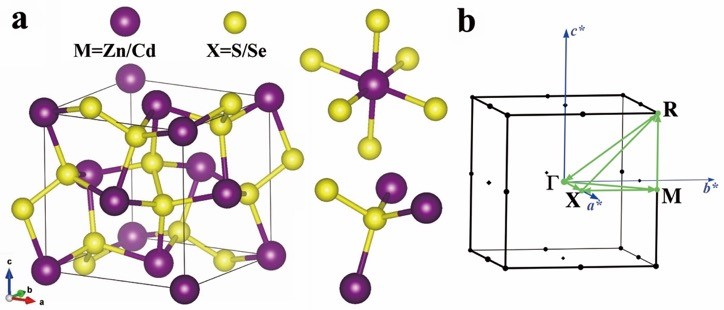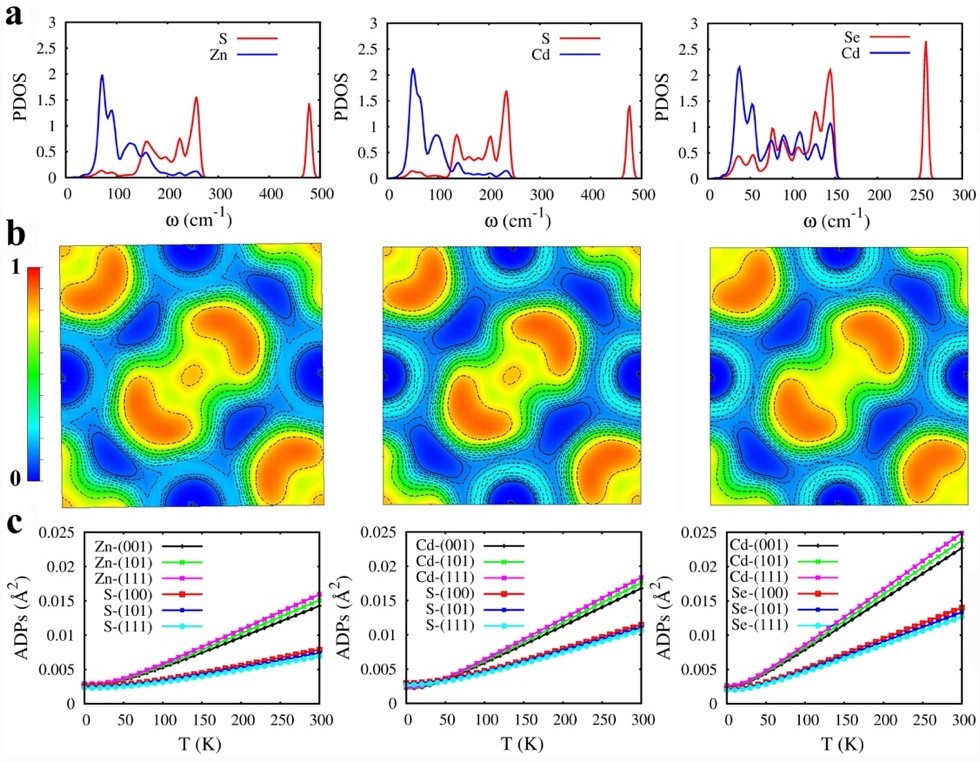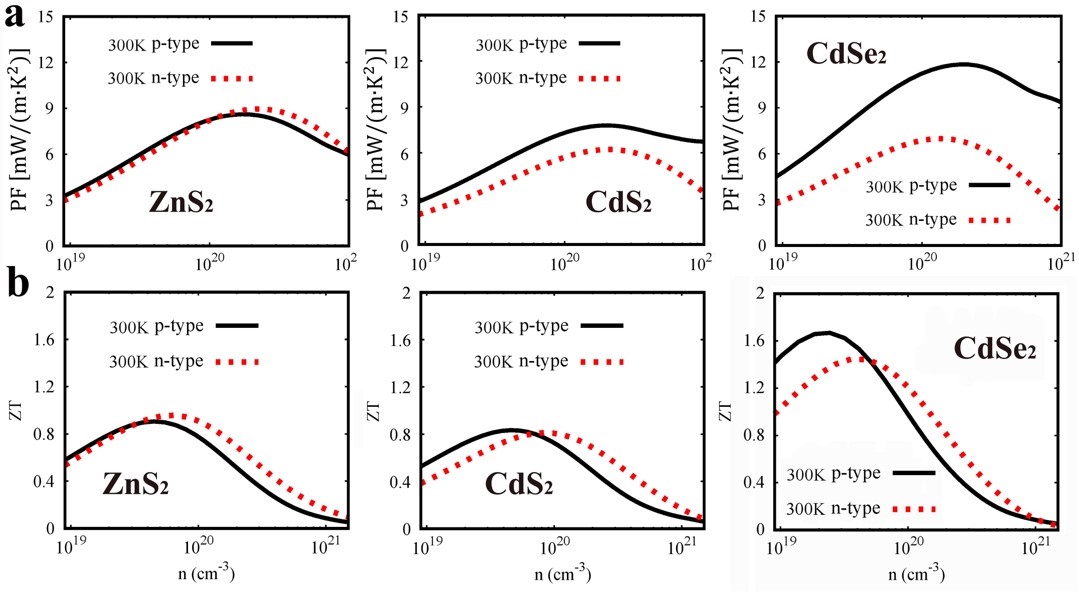
Recently, Prof. ZHANG Yongsheng’s research group at Institute of Solid State Physics, Hefei Institutes of Physical Science systematically investigated the thermoelectric (TE) properties of three pyrite-type IIB-VIA2 dichalcogenides (ZnS2, CdS2, and CdSe2), and successfully explored the physical mechanisms and several chemical trends.
Their findings were published in Physics Review B.
Through high-throughput (HT) computations, the three pyrite-type IIB-VIA2 dichalcogenides (ZnS2, CdS2, and CdSe2) with a simple cubic structure and the cheap elements had been predicted to possess promising TE properties by the same team. However, the detailed TE behaviors and the fundamental underlying physical mechanisms behind them still remain ambiguous.
In this research, the team investigated the thermal and electrical transport properties of the three pyrite-type IIB-VIA2 dichalcogenides, and evaluated their thermoelectric performances taking advantage of more accurate methods.
After calculating and analyzing the phonon properties, they concluded that all three pyrite-type dichalcogenides had localized high-frequency optical phonons contributed by their strongly covalently bound nonmetallic dimers and soft phonon modes contributed by their rattling like metal atoms, which resulted in their strong anharmonicities and low thermal conductivities.
Also some chemical trends in that heavier atom masses, larger atomic displacement parameters and longer bond lengths between metal and nonmetal atoms could result in the softer phonon frequencies.
Furthermore, all three compounds showed promising electrical transport properties for both p-type and n-type doping, owing to their large density-of-states effective masses and small conductivity effective masses, which could be explained in terms of the complex non-spherical iso energy Fermi surfaces in both the valence and conduction bands.
Aside from that, they found the low lattice thermal conductivity and promising electrical transport properties contributed to their excellent thermoelectric performances.
"This research illustrated the effects of the localized nonmetallic dimers and the rattling-like metal atoms on the thermal transport properties, and the importance of different carrier effective masses to electrical transport properties in these pyrite-type dichalcogenides, which could be used to predict and optimize the TE properties of other TE compounds in the future," said JIA Tiantian, first author of the paper.
The research was supported by National Natural Science Foundation of China, Grants No. 11774347, No. 12088101, No. 11991060, No. 12104035, and No. U1930402, and by China Postdoctoral Science Foundation, Grant No. 2021M690327, and by China Scholarship Council.

Figure 1. (a) Crystal structures and bonds between atoms in the pyrite-type IIB-VIA2 dichalcogenides [Pa3(_)-MX2, M=transition metal (Zn and Cd), X=S and Se]. (b) The corresponding first Brillouin zone and its high-symmetry points. (Image by JIA Tiantian)

Figure 2. Calculated partial phonon densities of states (PDOS) (a), projected 2D electron localization function (ELF) in (001) plane (b) and atomic displacement parameters (ADPs) along different directions of different atoms (c) in ZnS2, CdS2 and CdSe2 (from left to right), respectively. (Image by JIA Tiantian)

Figure 3. Calculated power factors (PF) (a) and figures of merit (ZT) (b) as functions of the carrier concentration for p-type and n-type doping at 300 K in ZnS2, CdS2 and CdSe2 (from left to right), respectively. (Image by JIA Tiantian)